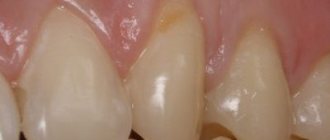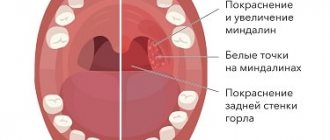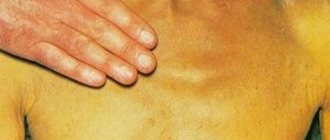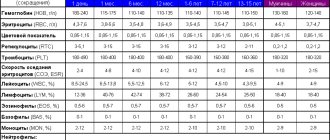The causative agent of dysentery is Shigella
Bacteria of the genus Shigella include more than 40 serotypes. The most common of them are Zone, Flexner, Newcastle and Grirogev-Shiga bacteria.
Rice. 1. The photo shows the causative agents of dysentery, Shigella bacteria, in the light of an electron microscope. They look like sticks with rounded ends. May form atypical spherical L-forms.
Shigella produces exo- and endotoxins. Endotoxins are released when Shigella is destroyed. They play a leading role in the pathogenesis of the disease and determine its clinical manifestations. Exotoxin cytotoxin damages the membranes of epithelial cells. Exotoxin enterotoxin increases the secretion of fluid and salts into the intestinal lumen. Exotoxin neurotoxin is produced by Shigella Grigoriev-Shiga.
Shigella have the following abilities that determine their pathogenicity:
- adhesion (attachment to enterocytes),
- invasion (penetration into enterocytes),
- intracellular reproduction (in enterocytes),
- toxin formation.
Shigella Zona is characterized by high survival rate in the external environment (from 3 days to 4 months). Salads, vinaigrettes, boiled meat and fish, minced meat, milk and dairy products, compotes and jelly are the main types of food products in which Shigella can reproduce.
Shigella is detrimental to high and low temperatures and disinfectants (bleach, chloramine solution and Lysol). Bacteria remain viable for a long time in the patient’s stool and underwear soiled with feces. At temperatures from 5 to 15 ° C they are stored for up to 2 months in moist soil and in cesspools. Shigella persists for up to 2 weeks in milk and dairy products, on vegetables and berries, contaminated paper and metal money.
Bacteria quickly change sensitivity to antibacterial drugs. In addition, drug resistance is transmitted to Shigella by bacteria in the gastrointestinal tract. High destructive capacity and multidrug resistance determine the widespread nature of the disease and the severe course of shigellosis. During epidemics, 2 to 7% of patients die from dysentery.
Rice. 2. In the photo, Shigella is the causative agent of dysentery.
Diet food
Dysentery should be treated not only with medications, but also with special dietary nutrition. Therapeutic diet plays an important role in the treatment of any gastrointestinal ailments. During the acute period of the disease, patients must strictly monitor what they eat, eliminate all harmful foods from their diet and drink plenty of fluids. The diet can only be expanded after the patient feels better.
Basic principles of dietary nutrition:
- For the treatment of dysentery, food that is well boiled or cooked in a steamer or oven is suitable. Fried foods should be avoided during treatment.
- To prevent rough food from damaging the intestinal walls, it must be thoroughly chopped.
- You should drink as much fluid as possible (at least 6 times a day in small portions).
- Patients should not eat vegetables containing coarse fiber (potatoes, carrots, cauliflower).
- Berries and fruits without peel are useful.
- Low-fat varieties of meat and fish can be eaten without fear if you have dysentery.
- Dietary food for the above-described disease includes dairy products and dried bread.
- Smoked, spicy, fatty, pickled and salty foods were banned.
- During treatment, doctors recommend avoiding drinks such as carbonated water, coffee and cocoa.
Doctors advise adhering to the above rules for 30 days after stopping treatment.
If dysentery has been diagnosed, the symptoms will go away in the shortest possible time only if all the necessary medications are taken and the diet is followed. In this case, it will not only be possible to get rid of the disease much faster, but also reduce the risk of complications.
Epidemiology of dysentery
Shigella parasitizes only in the human body (anthroponotic infection). The mechanism of transmission of pathogens is fecal-oral. Dysentery is transmitted through contaminated food, water and household items. The disease is highly contagious. For the development of dysentery, 100 microbial bodies are enough. From patients, Shigella enters the external environment with feces. The danger is posed by patients with acute and chronic forms of the disease, erased and atypical forms of acute dysentery and bacteria carriers. Patients remain infectious for about seven days, less often - up to 2 - 3 weeks.
Flies spread dysentery. Their breeding and active life occur in the months of June-August.
Rice. 3. Dysentery most often affects the sigmoid colon, rectum and its sphincter.
Folk remedies
You can fight the signs of dysentery not only with medications, but also with traditional medicine. And this should hardly be surprising, because traditional medicine has a large number of useful properties. As practice shows, a positive effect after using home remedies for dysentery appears within a short period of time.
Homemade medicines, the main components of which are medicinal herbs and plants, are extremely popular. To prepare useful products, either one type of plant or whole collections can be used.
You can cure the above disease in an adult with the help of burdock leaves. 3 times a day before meals, you need to take 1 spoon of the juice of this plant orally.
The following collection is considered very effective: 10 g of wild rosemary flowers and leaves should be mixed with 25 g of finely chopped marshmallow roots. The resulting mixture must be brewed in 1 liter of boiling water for 60 minutes. The finished mixture must be strained and drunk 1 spoon every 2 hours.
Dry blueberries have excellent anti-dysenteric properties. 100 g of raw material should be poured with 500 ml of boiling water, set aside for 60 minutes and strain.
Experts advise boiling blackberries and drinking the resulting liquid as tea. As practice shows, positive results appear the very next day.
How to treat dysentery with oak bark? 50 g of finely chopped oak bark should be poured with 800 ml of cold boiled water and wait at least 8 hours. The finished tincture must be strained and drunk throughout the day in small sips.
The following collection is no less popular: 2 parts of plantain must be mixed with 1 part of cinquefoil and knotweed. 100 g of the resulting mixture should be poured with 2 glasses of hot water, wait 30 minutes and drink 150 ml of healing liquid 4 times a day. It is most beneficial to drink this tincture immediately before meals.
Pour 50 g of crushed burnet root into 1 cup of boiling water, cook over medium heat for 30 minutes and strain. 1 spoon of the finished drug must be diluted in ¼ glass of clean water and taken orally 6 times a day. This medicine will help cope even with acute dysentery.
Blackberry leaves will help with dysentery.
Place 50 g of blackberry twigs and leaves in a bowl with 400 ml of hot water. The resulting consistency should be placed on the fire, cooked for 5 minutes, wrapped in a warm blanket for 40 minutes and strained. You should drink this remedy half a glass 2 times a day.
How the disease develops (pathogenesis of dysentery)
- With food, water or through household items, Shigella first enters the stomach, where it remains for several hours (rarely days). Some of them die. This releases endotoxins.
- Next, the pathogens enter the small intestine, where they adhere to enterocytes and release an enterotoxic exotoxin, under the influence of which fluid and electrolytes are intensively secreted into the intestinal lumen.
- Shigella hemolysin, located in their outer membrane, promotes the penetration of pathogens into epithelial cells (mainly the ileum), where they begin to multiply intensively. Enterocytes are damaged. Inflammation of the intestinal wall develops. Immune complexes, which include endotoxin, increase damage to the intestinal wall. They become fixed in the capillaries of the colon mucosa and disrupt microcirculation.
- Sensitized eosinophils and mast cells begin to secrete toxic substances. The cytotoxic effect of leukocytes is enhanced. All this contributes to the development of DIC syndrome from the 2nd week from the onset of the disease. Thrombosis of mesenteric vessels develops, including those of the lungs and brain.
- Intoxication of the body is caused by the entry of endotoxin from dead Shigella into the patient’s blood. When bacteria enter the blood, bacteremia develops.
Shigella toxins affect the central and autonomic nervous systems, cardiovascular and digestive systems, and adrenal glands.
In the chronic course of dysentery, it is not intoxication that comes to the fore, but disruption of the gastrointestinal tract.
When cured, the body is completely freed from infection. If the immune system is not functioning properly, recovery may take up to one month or more. Some patients become carriers of the infection. In some patients the disease becomes chronic.
With dysentery, the lower part of the large intestine is damaged - the sigmoid and rectum and its sphincter.
Rice. 4. The photo shows Shigella in the folds of the mucous membrane of the large intestine.
Rice. 5. In the photo, Shigella Flexnera (yellow) establishes contact with an intestinal epithelial cell (blue).
Rice. 6. In the photo, Shigella (pink color) invades the intestinal mucosa.
Other Helpful Home Remedies
Many patients with dysentery use the following home remedy: several skins from chicken gizzards should be dried on a clean sheet of paper for 24 hours (you should choose a sunny place). Dry films should be crushed to a powdery state and taken in small portions 2 times a day. The healing powder should be washed down with water. This remedy will help get rid of even the most severe diarrhea. The rest of the powder should be stored in a box in a cool place.
Few people know, but you can get rid of the disease described above using potato starch. The preparation of the remedy is quite easy: 50 g of potato starch should be diluted in 0.5 liters of cool water. The resulting liquid should be drunk in 1 dose. Positive results will appear within a few days.
“How to treat dysentery in children?” is a question that worries parents. Experts advise treating unpleasant symptoms in children with rice water. Porridge, hard-cooked in water without adding salt, very well and quickly helps not only children, but also adults get rid of diarrhea.
To eliminate unpleasant symptoms, doctors advise buying an alcoholic extract of propolis at a pharmacy. You need to dilute 1 small spoon of extract in 400 ml of warm water. You should drink at least 3 glasses of this liquid per day. Treatment with alcohol extract of propolis should be carried out for 1 week. This time is quite enough for positive results to make themselves felt.
To speed up the healing process, you should eat a little honey daily. The thing is that this product helps to quickly remove the dysentery bacillus from the stool. It is thanks to this that recovery occurs much faster.
The following mixture can replace medicinal tablets: 1 egg white must be mixed with 1 glass of cognac and 1 spoon of juice from golden mustache leaves. All ingredients must be mixed with a mixer and taken orally 3 times a day, 1 spoon.
The following recipe is no less popular: 50 g of purified birch charcoal powder should be mixed with an equal amount of garlic powder. Every day you need to take ½ g of the resulting consistency orally (3 times a day).
For inflammation of the gastrointestinal tract, doctors recommend eating oatmeal porridge. To prepare this porridge, pour 100 g of flakes into 1 liter of cool water, set aside for 4 hours and simmer over low heat until the mixture thickens. A very tasty and healthy dish is ready.
Amebiasis can be treated with pomegranate peels. First you need to dry a few pomegranate peels. After this, they must be ground to a powder state. 1 small spoon of powder should be infused in 400 ml of boiling water for 40 minutes. You need to drink at least 2 glasses of healing liquid per day. You need to drink this remedy in small sips throughout the day.
Signs and symptoms of dysentery
The incubation period for dysentery is on average 2 - 3 days, but can be several hours.
The severity of the disease depends on the method of infection, the number of microbial bodies and their virulence, and the ability of the macroorganism to resist infection.
- Acute dysentery has colitic and gastroenterocolitic course. The disease can be mild or moderate to severe. Dysentery can occur in an erased form.
- Sometimes the infectious process becomes chronic. Dysentery in this case can occur with relapses or continuously.
- After recovery, patients often experience bacterial carriage, which can be convalescent or transient.
Rice. 7. The photo shows Shigella. Having penetrated the large intestine (mainly its lower sections), the bacteria settle between the folds of the mucous membrane and then penetrate into the enterocytes, where they multiply.
Signs and symptoms of dysentery in the colitic variant of the disease
Shigella dysenteriae and Shigella flexneri are the main culprits in the development of the colitic variant of dysentery. The disease has an acute onset. Intoxication syndrome is manifested by increased body temperature, chills, a feeling of heat, weakness, decreased appetite, adynamia, headache, bradycardia and low blood pressure. Diffuse, dull pain appears in the abdomen, which quickly becomes acute and is localized in the lower abdomen, often on the left. A false urge to defecate (tenesmus) appears. The stool is frequent and mushy. Over time, it becomes liquid with an admixture of blood and mucus (“rectal spit”). The tongue is coated.
Signs and symptoms of mild dysentery
Mild dysentery is characterized by moderate abdominal pain. Body temperature rises to 38°C. The frequency of stool does not exceed 10 times a day. The stool has a mushy consistency. The admixture of blood can only be determined by scatological examination. The sigmoid colon is spasmodic. Sigmoidoscopy reveals catarrhal, and, a little less often, catarrhal-hemorrhagic or catarrhal-erosive proctosigmoiditis. Phenomena of intoxication and loose stools are recorded within several days. The mucous membrane is restored within 2 - 3 weeks.
Signs and symptoms of moderate dysentery
Elevated body temperature (up to 39 ° C) is accompanied by chills and can last from several hours to 4 days. Symptoms of intoxication are pronounced. The frequency of stools reaches 20 times a day. The stool is streaked with blood and mucus. The pain in the lower abdomen is cramping. Symptoms of damage to the cardiovascular system are recorded: small pulse, tachycardia, systolic pressure drops to 100 mm. Hg Art., heart sounds are muffled. The tongue is dry, thickly coated with white coating. During sigmoidoscopy, catarrhal-erosive changes are recorded. Multiple hemorrhages and often ulcerative defects are visible. The level of neutrophil leukocytes in the blood increases to 109/l. The symptoms of intoxication and diarrhea last 2 - 5 days. Restoration of the mucous membrane and normalization of the body's functioning occurs in 1 - 1.5 months.
Signs and symptoms of severe dysentery
In severe dysentery, the disease develops quickly. Toxicosis is pronounced. There is a profound disruption in the functioning of the cardiovascular and respiratory systems. Elevated body temperature (up to 40 °C) is accompanied by chills. Symptoms of intoxication are pronounced. The patient is bothered by nausea and vomiting. Abdominal pain is significant. Tenesmus is painful. Stool comes up to 20 times a day. The anus gapes due to paresis of the sphincters. Masses of the color of “meat slop” are constantly released from it. The pulse quickens. Blood pressure drops. Heart sounds are muffled. The tongue is dry and covered with a brown coating. It is not possible to palpate the colon due to severe pain. During sigmoidoscopy, damage to the intestinal mucosa along the entire length, many foci of hemorrhage and necrosis are noted. When fibrinous deposits and necrotic masses are rejected, long-term non-healing ulcers are exposed. The number of leukocytes in the peripheral blood reaches 129 - 159/l, ESR - up to 30 mm/hour. Protein and red blood cells appear in the urine. The acute period lasts up to 10 days. Pain on palpation in the colon area persists for up to 1 month. Complete restoration of intestinal function occurs after 2 or more months.
Rice. 8. Severe intestinal damage due to dysentery. The photo clearly shows thickening of the wall of the colon and replacement of the mucous membrane with a thick, rough, yellow film. In places where the film is rejected, bleeding ulcers appear, merging in places.
Signs and symptoms of dysentery with a toxic course
A violent onset, a very high body temperature with tremendous chills, and pronounced symptoms of toxicosis are the main symptoms of dysentery in the toxic variant of the course. Infectious-toxic shock outstrips the development of colitic syndrome. The nervous system is sharply depressed. The patient experiences prostration and convulsions. Disorders of the cardiovascular system can lead to the death of the patient. Dysentery caused by Shigella Grigoriev-Shiga occurs with painful tenesmus. Stools are very frequent - up to 30 - 50 times a day. Blood and mucus are detected in liquid stool.
Signs and symptoms of dysentery in the gastroenterocolitic variant of the disease
The culprits in the development of this form of the disease are most often Shigella Sonne. The phenomena of intoxication develop in parallel with damage to the stomach and small intestine (gastroenteritis). Body temperature rises to 39°C. Pain in the stomach, nausea and repeated vomiting are the main symptoms of dysentery at the beginning of the disease.
Then rumbling and pain in the abdomen and false urge to defecate appear. The stool is copious, liquid, light yellow or greenish in color, often mixed with mucus. Pieces of undigested food may be found in the stool. Dehydration of the body quickly develops: facial features become sharper, dry mouth and throat, decreased conjunctival moisture, rapid pulse, decreased blood pressure, weakened heart sounds.
Blood appears in the stool. On palpation, pain is noted in the area of the sigmoid colon. Sigmoidoscopy helps to identify changes in the mucous membrane of the sigmoid and rectum. With the gastroenterocolitic variant of the course of dysentery, catarrhal inflammation is more often detected, sometimes with areas of erosion. The severity of the disease depends on the degree of dehydration of the body.
Rice. 9. The photo shows Shigella Flexnera. The outer and inner membranes are indicated in yellow. Bacteria deliver virulence factors (proteins and toxins) into the human body through transport channels using “needles” protruding outward. In the photo on the right, shigella “syringes” are highlighted.
Signs and symptoms of dysentery with atypical course
The disease is mild. Subjective manifestations of the disease are minimal. The sigmoid colon is painful on palpation. Sigmoidoscopy reveals catarrhal inflammation of the rectum and sigmoid colon. Mucus in the stool and an increased number of leukocytes are detected only by microscopy.
Signs and symptoms of dysentery with subclinical (secretive) course
The only method for diagnosing subclinical forms of dysentery is the detection of Shigella in stool in combination with an increase in antibody titers during a serological study.
Signs and symptoms of dysentery with prolonged course
If symptoms of dysentery and Shigella discharge are recorded for more than 2 weeks (mild form), more than 3 weeks (moderate form) and more than 4 weeks (severe form), then it is considered that dysentery has become protracted. The reason for this may be immunodeficiency states, exhaustion of the patient and inadequate treatment. Fibrinous-purulent inflammation develops in the colon, and deep ulcers appear. The appearance of hectic (debilitating) fever indicates the addition of a secondary infection.
Rice. 10. Catarrhal colitis due to dysentery. The microscopic specimen clearly shows lesions in the intestinal mucosa (indicated by arrows).
Signs and symptoms of chronic dysentery
If dysentery lasts more than 3 months, they speak of a chronic course of the disease.
In the recurrent course of dysentery, the manifestations of the disease alternate with periods of clinical well-being, lasting from 2 weeks to 3 months. In case of relapses, the clinical picture is mild. The patient's health remains satisfactory. Stool 3 - 5 times a day. There is no mucus, blood in the stool or false urges.
If the course of the disease is continuous, then the pathological process is constantly progressing. Intoxication appears. Deep inflammatory and trophic changes develop in the large intestine and intestinal dysbiosis. The stool is unformed and mushy. Blood, mucus and pus often appear in the stool. The stomach and small intestine are affected, which is manifested by a feeling of heaviness in the epigastric region, belching, bloating, and rumbling.
Signs and symptoms of dysentery caused by Shigella Sonne
Features of the disease are the predominant involvement of the ascending, transverse colon and even the cecum. The onset of the disease is acute. Chills, vomiting and pain in the right side of the abdomen are the main symptoms of Sonne dysentery. The symptoms of Sonne's dysentery are similar to the symptoms of food poisoning, and damage to the cecum is often mistaken for acute appendicitis.
Signs and symptoms of dysentery caused by Shigella Newcastle
Acute onset, nausea and vomiting, a rise in body temperature to 39.5 ° C, cramping abdominal pain, the appearance of frequent loose stools only from 2 to 3 days of illness are the main symptoms of Newcastle dysentery.
Signs and symptoms of dysentery in modern conditions
Dysentery in modern conditions has acquired a mild course. The reason for this is good immunity in a significant part of the population, the prevalence of less virulent species of Shigella Flexner and Sonne. Atypical forms are common.
Signs and symptoms of dysentery in young children
Dysentery in children of the first year of life is often combined with other types of intestinal infections, which causes the child’s condition to worsen sharply. In some children the disease becomes chronic.
Dysentery in young children occurs with symptoms of toxicosis and dehydration. Stool mixed with mucus retains its fecal character and becomes greenish in color. The disease often takes a protracted course. The stool returns to normal slowly.
Shigella bacteria carriage
If a patient in the recovery stage produces Shigella for 3 months, then they speak of convalescent carriage of the bacteria.
If a practically healthy person who has never had dysentery and has not had intestinal dysfunction over the past three months has had a single release of Shigella bacteria, then they speak of transient bacterial carriage.
Humans are highly susceptible to dysentery. Immunity after illness is unstable. Repeated cases of the disease are being recorded.
Complementary therapy
Taking antibiotics will not be enough to speed up recovery and prevent the infection from returning. Therefore, other drugs are also prescribed:
- Enterosorbents absorb toxic substances produced by bacteria during their life processes and remove them out along with feces. Drugs such as Enterol, Activated carbon, Enterosgel, Laktofiltrum, Filtrum-sti, Smecta, Polyphepan can be prescribed. The tablets should be taken with plenty of water.
- A solution of glucose and salt helps ease and restore kidney function and improve the vascular system in this organ. They prevent dehydration. For this purpose, ready-made solutions, for example, Regidron, Gastrolit, can be prescribed.
- Immunomodulators will help increase the body's defenses. Against their background, the recovery process is accelerated, and the risk of catching a new infection is reduced.
- Probiotics and prebiotics (Lactobacterin, Linex, Bifidumbacterin) restore disturbed microflora and intestinal motility, increase its protective functions, and improve metabolic processes.
- During the entire course, vitamin and mineral complexes are prescribed.
- Enzyme preparations (Creon, Mezim, Pancreatin) help the digestive tract absorb nutrients and normalize the functioning of all organs.
- In severe forms of infection, glucocorticoids may be prescribed.
- Abdominal pain is relieved by antispasmodics: No-shpa, Papaverine.
Bacteriophages are effective in the fight against dysentery. They do not affect the entire body; they only affect bacterial cells.
Dysenteric bacteriophage should be taken 40 minutes before meals three times a day for a week. Adults are usually prescribed a dosage of 30 ml.
Along with the recovery period, on average, treatment takes about a month. If treatment is started on time, it may take even less time.
Before starting treatment for dysentery on yourself or your child, you should consult your doctor. Self-administration of medications can lead to worsening of the condition and complications.
Diagnosis of dysentery
To recognize the disease, the following are used:
- Carefully collected epidemiological history.
- Analysis of the clinical picture of the disease.
- Isolation of Shigella from the patient's stool is the most reliable laboratory confirmation of the diagnosis of dysentery. Culture is carried out only on warm stool and stool taken from the rectum. After one day, the doctor receives a preliminary answer, and after 3 days, a final answer.
- A scatological examination reveals leukocytes, red blood cells and mucus.
- From the 10th day of the disease, if bacteriological confirmation has not been previously obtained, an agglutination test is performed. The method is widely used to diagnose chronic forms of dysentery.
- Using a sigmoidoscope, you can determine the dynamics of changes occurring in the mucous membrane of the rectum and lower part of the sigmoid colon.
Rice. 11. The photo shows the growth of Shigella Zone colonies on a Petri dish.
Rice. 12. The photo shows a sigmoidoscope. The device is used to determine the nature of changes in the mucous membrane of the rectum and lower sigmoid colon. And also to monitor the effectiveness of treatment. The inspection level is 25 - 30 cm.
Rice. 13. The photo shows normal mucous membrane of the large intestine. In case of dysentery, using a sigmoidoscope, changes in the mucous membrane of the large intestine are detected: hyperemia of the mucous membrane, hemorrhages that have a star-shaped appearance, mucus, pus, fibrin deposition and ulcers.
Prevention
The prognosis for shigellosis is most often favorable; the disease is most severe in children, the elderly, people with severe somatic pathologies (diabetes mellitus, obesity, cardiac, pulmonary pathology), and also among malnourished people.
Complications of shigellosis include infectious-toxic shock (a critical condition associated with an excess of bacteria and toxins in the blood), infectious-toxic encephalopathy (brain damage occurs due to increasing intoxication), perforation (perforation) of the intestine, peritonitis (inflammation of the peritoneum, that is, a kind of membrane covering the abdominal organs), prolapse of the rectal mucosa, paraproctitis (purulent inflammation of the tissue around the rectum), pneumonia (pneumonia), thrombosis of the vessels of the mesentery and anal fissures.
Dysentery can also cause complications associated with medical procedures: intravenous injections, removal of urine using catheters, being on mechanical ventilation, and the like. These complications can aggravate the patient's condition and even lead to death.
The most effective prevention measures are presented below.
Planned
Strict control over production processes in the food industry, timely detection and treatment of patients with shigellosis and bacteria carriers. Control over water supply and drainage systems, preventing sewage water from entering water bodies used for swimming and drinking. Sanitary and educational work with the population, compliance with the rules of personal and food hygiene, control of flies, refusal to purchase fruits, vegetables, berries and dairy products that have not passed sanitary control.
Routine vaccination is recommended for people working in the food industry, medical workers, conscripts, military personnel working under contract, traveling abroad to countries with a high incidence of shigellosis.
Vaccination is carried out using the drug Shigellvac (Russia), which provides the necessary level of protective antibodies for 9 - 12 months, then revaccination is required, which is allowed for children from 3 years of age. Other vaccines are not registered in Russia.
Emergency
Persons who have been in contact with a patient with dysentery are subject to medical observation (quarantine) for 7 days, undergo examination, and, if necessary, treatment. Prophylactic administration of dysentery bacteriophages is recommended. It is believed that contact persons do not need to take antibacterial agents if the results of three-time stool cultures are negative.
When patients are identified in a subclinical form, as well as bacteria carriers, they are sanitized (treated). Quarantine for dysentery is introduced when two or more cases of shigellosis are detected in an organized group (kindergarten, school, etc.), new cases of illness in an organized group within 7 days after the identified case of dysentery, as well as in the case of shigellosis in two or more persons, not connected by everyday and work relationships, but living in the same locality.
Treatment of dysentery
Main directions in the treatment of dysentery:
- Treatment of acute and exacerbation of chronic dysentery is carried out in a hospital.
- The diet is mechanically gentle, expanding as the disease subsides.
- Detection and treatment of helminthiases.
- Prescription of digestive enzymes (hydrochloric acid, pancreatin, etc.).
- General strengthening and vitamin therapy.
- Antibiotic therapy (tetracycline, chloramphenicol, biomycin, sulfonamides).
- Local treatment (therapeutic microenemas).
- Vaccine therapy (alcohol divaccine Chernokhvostov is used).
Recovery
Rehabilitation after dysentery involves taking medications to restore microflora : probiotics, prebiotics, bifidobacteria and lactobacilli. In addition, after contracting amoebiasis, observation by an infectious disease specialist is necessary for about a year.
For young children, a stay in a convalescent ward may also be recommended. The duration of such rehabilitation can vary from 2 to 4 weeks depending on the condition and age of the baby.
To avoid relapse, it is important to follow preventive measures:
- wash vegetables and fruits before eating,
- wash your hands after visiting the toilet and coming from outside,
- When swimming in public places, try not to swallow water,
- Be sure to have a conversation with children about behavior in the pond.
Medicinal properties
Norsulfazole has an antimicrobial bacteriostatic effect on the causative agents of many infectious diseases, suppressing their growth and reproduction.
Dosage forms. The drug is a dried microbial mass of live lactobacilli (lactic acid bacteria). Available in tablets (1 tablet - 1 dose) in a bottle of 20 pieces, in ampoules of 3 doses in a package of 10 ampoules.
Medicinal properties. Lactobacterin exhibits antagonistic activity against a number of pathogenic forms of microbes and helps restore normal intestinal microflora.
Dosage forms. Groseptol is a combination drug. Available in tablets in two dosages: 0.48 and 0.12 g in a package of 20 pieces each. One tablet (0.48 g) contains trimethoprim 0.08 g, sulfamerazine 0.4 g. One tablet (0.12 g) contains trimethoprim 0.02 g, sulfamerazine 0.1 g.
Medicinal properties. The drug has a wide spectrum of antimicrobial action. The full therapeutic effect of groseptol develops 4 hours after application and lasts up to 12 hours. When released from the body, the drug creates a high concentration in the urinary tract.
Buying medicines online
Get a doctor's consultation
Hot countries differ greatly from temperate climates not only in temperature, but also in microflora. Thus, among diseases that are quite rare in the CIS latitudes, dysentery is found; it is mainly caught by tourists from warm countries.











